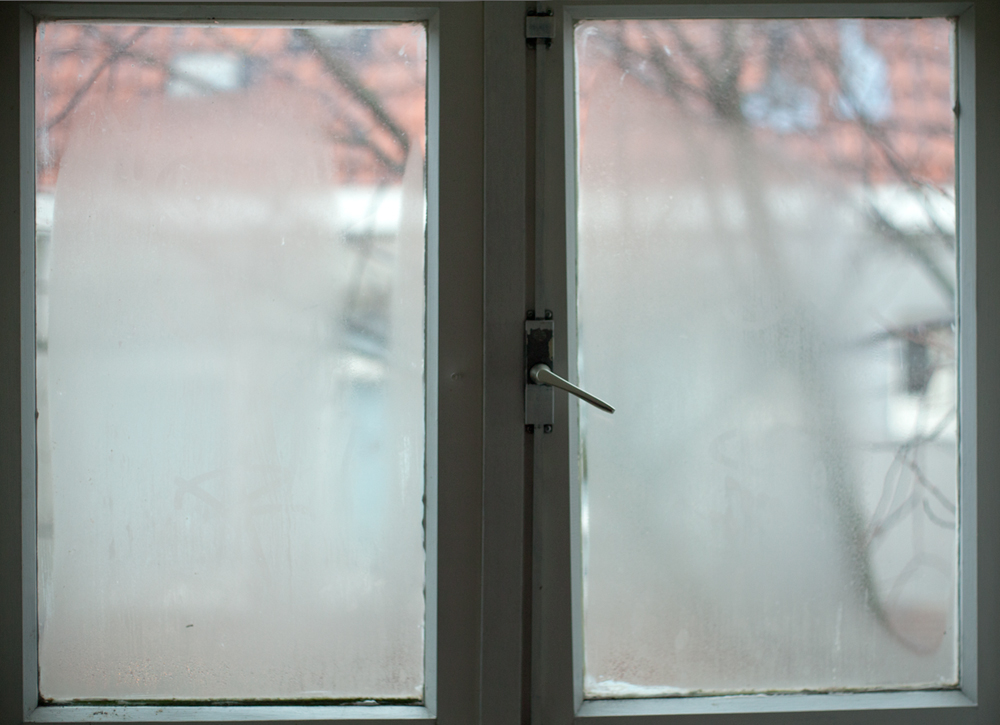Damp is a common problem in UK garden rooms and garden offices, it can occur at any time but it is particularly common during the colder, wetter months of the year and anyone who has experienced it is probably well aware of just how much of a nightmare it can be to deal with! Damp can not only cause unpleasant smells, it can have a detrimental effect on many parts of a building, including mildew and mould, stains and salts on the surface of walls, crumbling plaster, ruined decoration, soft furnishings and flooring and rotting woodwork. Damp issues need to be dealt with immediately before the situation deteriorates further as it can have a serious effect upon your health – and your pocket!
There are four common types of damp found in garden rooms – rising damp, penetrating damp, damp caused by condensation and damp caused by leaks. This article is the first in a series of four in which we will look into the most common types of damp. In this article we will cover the damp caused by condensation, we will look at why condensation happens, the tell tale signs that it is causing damp in your garden room and how to deal with it when you find it. The second article in this series looked at the issues of rising damp, please click here if you would like to view this article.
Why does Condensation Happen in Garden Rooms and Garden Offices?
It is common to experience issues with condensation in homes, offices and garden buildings during autumn, winter and early spring as these are the colder months when we are likely to be using the central heating, living room fires and tumble dryers, although it can happen at any time of the year. As the building warms up, its capacity to hold moisture increases, this moisture is known as water vapour or humidity. This humidity will be greatly increased when kettles are boiled, showers are run or clothes are dried, either on radiators or in the tumble dryer, even our breathing contributes to the moisture within a room. Of course, doors and windows will be kept closed during these colder months of the year so this moist air is trapped inside and we don’t even notice it until it begins to condensate.
What kind of condensation could I suffer from in my garden room or garden office?
There are two common types of condensation that affect garden rooms and garden offices, these are surface condensation and interstitial condensation.
What is surface condensation?
Surface condensation happens when small droplets of water form on cold surfaces in your garden room or garden office, most commonly window glass, if you notice that your windows have steamed (or fogged) up or droplets of water are running down the surface of the glass, then you are experiencing condensation. The dew point is the temperature at which moisture condenses out of the air, so condensation will form upon any surfaces that are at or below the dew point. Condensation is most easily noticed when you take a bath or shower, this is due to the amount of steam generated and the smaller size of most bathrooms, you will find that your bathroom window, mirror, the taps and maybe even the door handle have all steamed up! This also often happens in kitchens during the preparation of meals or washing up.
What is interstitial condensation?
Interstitial condensation happens in the same way but the moist air actually penetrates into the very fabric of the garden room or garden office. The water vapour reaches dew point within the floors, walls or roof and the resulting condensation can cause damage to the insulation layer and the structure of the building.
Tell-tale signs that your building may have a problem with interstitial condensation are often the same that you would see with damp caused by surface condensation, however, interstitial condensation can be very difficult to diagnose and damage can be caused within the fabric of the building before any signs of an issue with damp appear. Ventilation and dehumidifying can be effective against interstitial condensation but we recommend that you seek professional advice if you suspect this is an issue in your garden room or garden office.
A damp surveyor will test for signs of interstitial condensation by using the following equipment:
Electronic moisture meter – This is used to detect the levels of moisture on the surface of walls, etc.
Electronic moisture meter – Holes are drilled and probes are inserted to detect the levels of moisture within the walls, etc.
Infrared cameras – These are used to observe the surface temperatures of the garden room or garden office, wet or damp areas of the building will be plainly visible when using an infrared camera.
Common Signs of Damp Caused by Surface Condensation
Condensation can cause serious issues, both for your health and your home, so if you feel that you may have damp caused by condensation in your garden room or garden office it is crucial to get it diagnosed and dealt with at the earliest opportunity.
The following are common indicators that you may have an issue with damp caused by surface condensation in your garden room or garden office:
You may also be able to detect a damp or musty smell, although this indicator of damp is not just limited to the type of damp that is caused by condensation.

How to Stop Condensation in Garden Rooms and Garden Offices
As they say, prevention is better than cure and happily there are a number of easy measures that you can introduce in order to keep any issues with damp caused by condensation at bay.
The following are the simplest ways of preventing damp caused by the formation of condensation in garden rooms and garden offices:
Ventilation
Modern homes and garden buildings are generally warm and snug because they are well sealed and insulated, with double (or triple) glazed windows and doors, whilst keeping cosy is great, it is not so good for preventing condensation because there is no ventilation to remove the moisture laden air and allow fresh air in.
For further information on ventilation in a garden room please click here
Insulation
Insulation is another key factor for preventing the damp that can be caused by condensation in your garden room or garden office, insulation can be fitted beneath the foundation (usually a concrete base), under the flooring, within the walls and in the roof area. Insulation helps to prevent the loss of heat during the colder months and stops the building from becoming overheated during the hot summer months, it is also a great sound proofing product. It must be noted that, although insulation can help to prevent condensation by keeping the interior of a building above dew point, it can also cause condensation if the building is not adequately ventilated. If you would like to know more about garden room insulation, please click here. For garden room floor insulation click here.
Heating
Keeping your garden room or garden office warm by using a form of heating is another way to help prevent the damp that is caused by condensation, it is recommended that you opt for a constant, low level heat, such as that provided by underfloor heating, as sudden rises and falls in temperature can actually make a condensation problem even worse. Information about garden room heating can be found here. Please click here for details on garden room under floor heating.
Double glazing
Condensation can form on any kind of glazing but single glazed windows are much colder inside than double or triple glazed windows so they are much more likely to attract condensation. Leaving a window locked in a slightly open position will allow fresh air to enter the building, reducing the possibility of condensation occurring, trickle vents will provide the same level of ventilation.
Dehumidifying
Dehumidifiers are designed to draw excess moisture from the air, this is then collected in a reservoir ready to be emptied, they are very effective at helping to prevent condensation. Dehumidifiers come in all shapes and sizes and are available in a range of prices, so you should be able to find one to suit your needs and your pocket. We recommend that you seek advice from your supplier before you buy.
We do hope you have found this article on condensation in garden rooms and garden offices to be informative, watch out for our next article in this series of four in which we are continuing to cover the subject of damp.
Special thanks Shelly for providing the image

1 thought on “Sick of Your Garden Room / Garden Office Getting Damp From Condensation?”